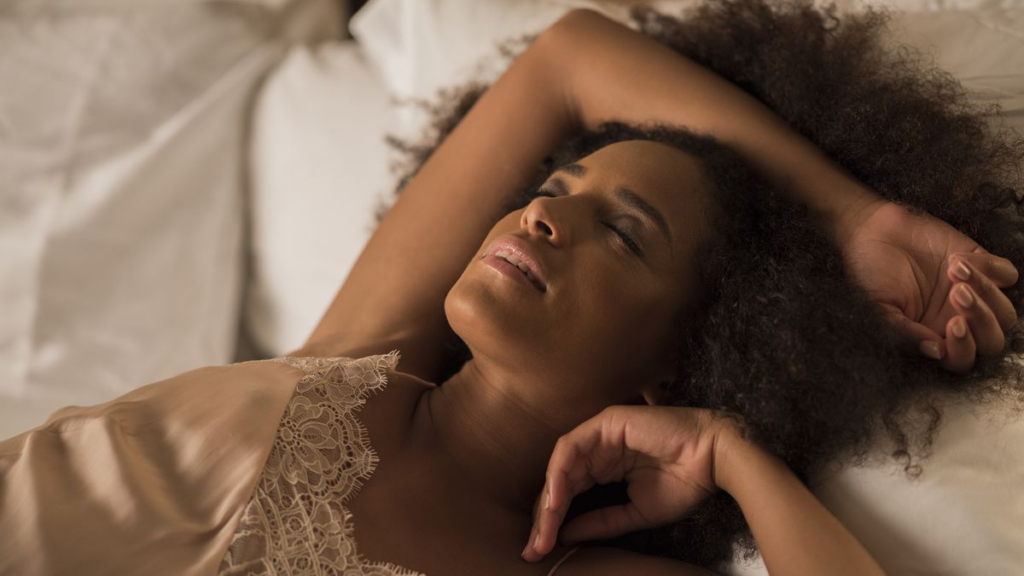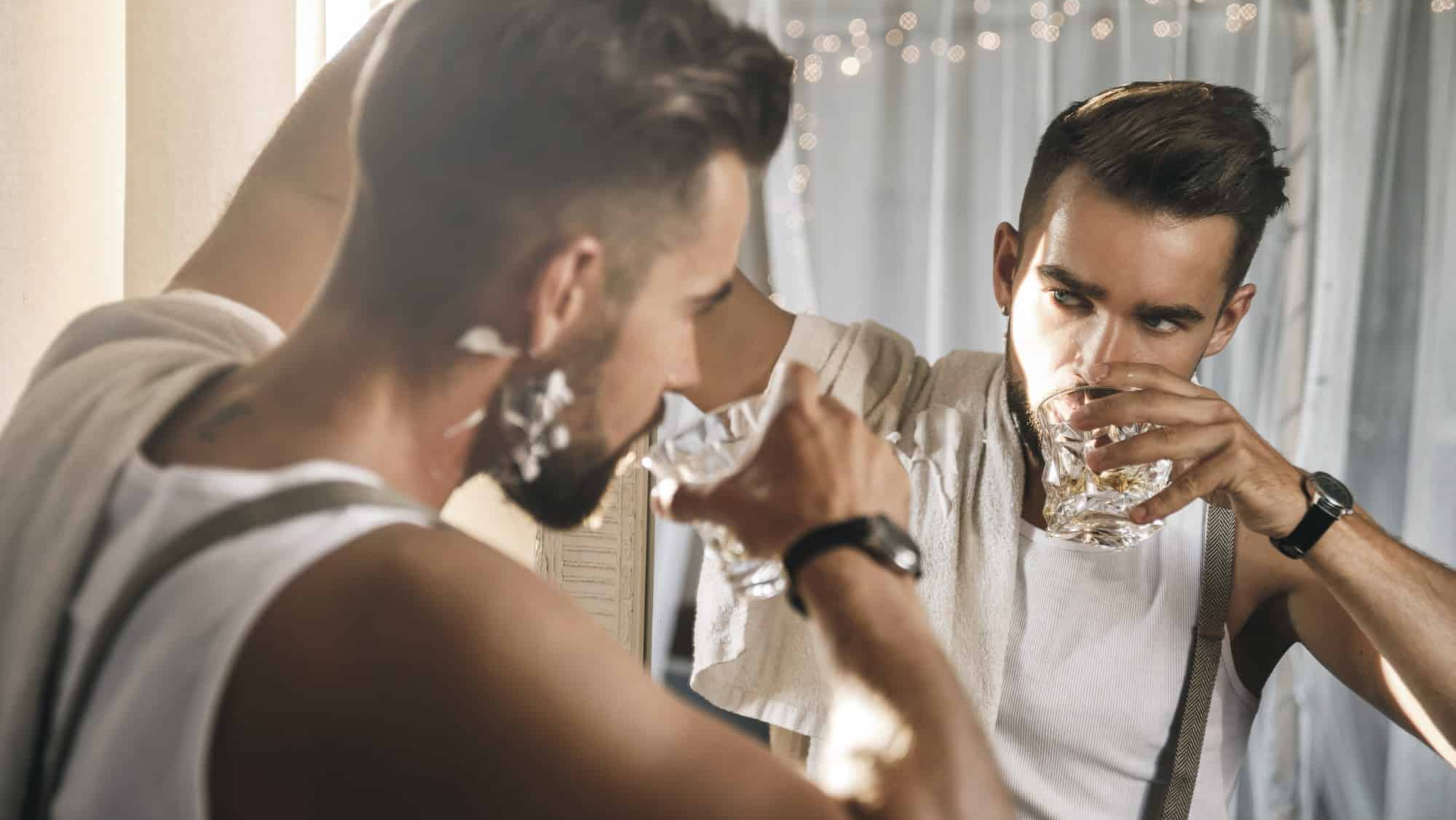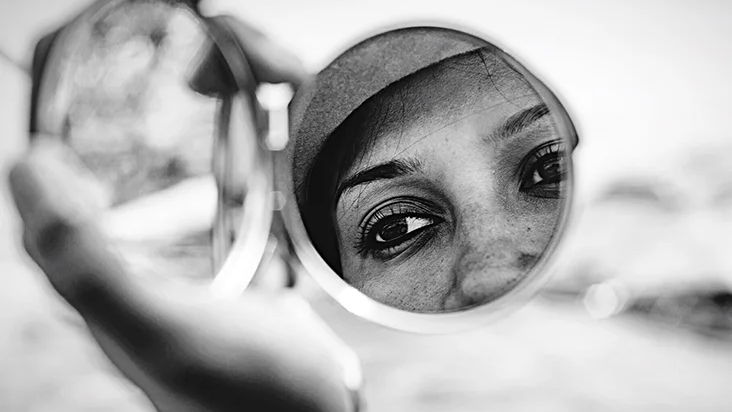Welcome to the fascinating world of autosexuality! In today’s ever-evolving society, it’s important to embrace the diversity of human sexuality, including lesser-known aspects like autosexuality. But there’s far more to it than just “being attracted to yourself.” It encompasses a rich tapestry of experiences, identities, and emotions that deserve to be understood and celebrated.
In this article, we’ll unpack the complexities of autosexual identity, debunk common misconceptions, and shed light on the lived experiences of autosexual individuals. Join us as we explore this unique facet of human sexuality with curiosity, empathy, and an open mind.
Table of Contents
- Understanding Autosexual Identity
- The Autosexual Experience
- Autosexuality Across the Lifespan
- Challenges Vs. Triumphs in Society and Relationships
- Myths, Stigma, and Coping
- Autosexuality & LGBTQ+
- Autosexuality in Media, Culture, and the Arts
- Autosexuality in Psychology, Research & Education
- Conclusion: Embracing Autosexuality
- Want More Interesting Articles?
Understanding Autosexual Identity

Alright, let’s get real about autosexuality. It’s not your run-of-the-mill topic; it’s a bit like peeling back layers to uncover something unique about human sexuality. Autosexuality is all about finding your groove within yourself, rather than looking outside for validation. Picture this: feeling a deep connection with your own being, whether it’s appreciating your quirks or feeling a spark of attraction to yourself.
Autosexual individuals march to the beat of their own drum. Instead of chasing after someone else, they’re content in their own company. But don’t get it twisted – it’s not about being self-absorbed or full of yourself. It’s more about knowing who you are and embracing it, flaws and all.
Sure, autosexuality might raise some eyebrows. People might wonder, “How can you be attracted to yourself?” But hey, love comes in all shapes and forms, right? And for autosexual folks, that love starts from within.
As we dig deeper into autosexual identity, we’ll uncover the ups and downs of navigating this unique aspect of sexuality. Let’s keep going.
The Autosexual Experience

Here are some points that will help you further understand this identity:
- Autosexual individuals navigate the highs and lows of finding pleasure and connection within themselves, embracing their own company with enthusiasm and satisfaction.
- They experience rushes of excitement and joy when reflecting on their own attributes and company, finding beauty and allure in their own reflection.
- Challenges arise due to society’s fixation on external validation, leading to misconceptions and judgment. Autosexual individuals often face scrutiny or skepticism from those who struggle to understand the concept of self-directed attraction.
“We’ve been told that our bodies aren’t attractive enough. I wouldn’t be surprised if, to experience autosexuality, you have to be at ease with your body.” ~ Ghia Vitale, Autosexual
- Despite societal pressures, autosexual individuals find empowerment in their autonomy and self-awareness, celebrating their unique identity and desires.
- Autosexuality isn’t about an inability to connect with others but rather recognizing the importance of self-connection. Autosexual individuals can form deep, meaningful relationships with others while prioritizing their relationship with themselves.
- The journey of self-discovery as an autosexual individual is filled with moments of introspection, personal growth, and empowerment. It’s about embracing authenticity, challenging societal norms, and finding fulfillment on one’s own terms.
Autosexuality Across the Lifespan

Let’s take a quick look at how autosexual identity evolves and unfolds from adolescence to adulthood.
- Adolescence: This is a time of exploration and discovery, where young people start questioning their sexual orientation. For some, realizing they might be autosexual can be both exciting and confusing. There’s pressure from peers, media, and society to fit into certain norms, which can make understanding and accepting one’s autosexual identity a bit of a rollercoaster ride.
- Young Adulthood: As individuals enter their twenties, they often gain more independence and freedom to explore their identities. For autosexual folks, this might mean embracing their self-attraction and learning to navigate relationships and societal expectations on their own terms. It’s a period of self-discovery and figuring out what feels right for them.
- Adulthood: By the time people reach adulthood, they’ve usually had more time to come to terms with their autosexual identity. This stage is about finding acceptance and confidence in who they are, despite any lingering societal stigma or pressure to conform. It’s also a time of seeking out supportive communities and resources that validate and celebrate their autosexuality.
Interesting Fact
Bernard Apfelbaum coined the term “autosexuality” in 1989. He used it to describe people who sexually respond to their own touch, but have trouble with responding to someone else sexually.
Throughout these life stages, supportive resources and communities are essential for autosexual individuals. Whether it’s online forums, social media groups, or local meetups, these spaces provide validation, understanding, and solidarity for people exploring their autosexual identity.
Challenges Vs. Triumphs in Society and Relationships

Navigating the ups and downs of societal expectations and relationships is all part of the autosexual journey. Here’s a closer look at how autosexual folks handle these challenges in their own unique way:
Navigating Social Expectations:
Autosexual individuals often find themselves in situations where society expects them to follow the traditional path of finding a partner.
Take Sarah of Philadelphia, for example. She’s an autosexual woman who loves her independence and doesn’t feel the need to conform to societal norms. Instead of succumbing to pressure, she confidently embraces her single status, focusing on her career and personal growth. Similarly, Alex of Houston, a non-binary autosexual individual, proudly expresses their identity without seeking validation from others.
How can autosexuals come to grips with their identities like Sarah and Alex?
- Embrace your independence: Don’t feel pressured to conform to societal norms. Take pride in being true to yourself.
- Find supportive communities: Surround yourself with people who accept you for who you are and celebrate your uniqueness. These can include online support sites.
- Communicate openly: Be honest with friends and family about your identity and boundaries. Clear communication can help foster understanding and acceptance.
“Just as much as there is diversity among sexual identity and expression among heterosexual or queer folks, there is for autosexual folks.” ~ Rachel Gersten, LPCC, a licensed therapist and co-founder of Viva.
Challenges in Romantic Relationships:
When it comes to romance, autosexual individuals face their own set of challenges.
Meet “Jamie and Taylor“ of Los Angeles, a couple who both identify as autosexual. While they deeply cherish their independence, they also prioritize emotional connection and intimacy in their relationship. To strike a balance, they maintain open communication and mutual respect, allowing each other the space to thrive individually while nurturing their partnership. S
Similarly, “Maya J” of Chicago, an autosexual woman, found herself struggling to explain her identity to her partner. Through honest conversations and vulnerability, they worked together to deepen their understanding of each other’s needs and desires, strengthening their bond in the process.
From all of this we see it’s important to:
- Prioritize communication: Open and honest communication is key to navigating the complexities of romantic relationships.
- Set boundaries: Make sure your partner understands your needs and respects your autonomy within the relationship.
- Find common ground: Focus on shared values and interests to strengthen your connection while maintaining your individuality.
Autosexula Interviews:
Navigating Friendships and Platonic Connections:
Friendships are everything to autosexual individuals. These connections aren’t just about hanging out; they’re about finding people who truly get them.
Let’s say two autosexuals bond over their shared love for hiking and exploring nature. Their friendship provides a safe space where they can be themselves without any judgment, supporting each other through life’s ups and downs. Or someone can find solace in an online community of like-minded individuals. Through virtual connections and shared experiences, they built meaningful friendships that celebrated their uniqueness and provided a sense of belonging.
- Seek like-minded individuals: Look for communities or groups where you can connect with others who share similar experiences and identities.
- Be open to new connections: Don’t be afraid to reach out and make new friends who appreciate you for who you are.
- Support each other: Offer support and understanding to friends who may be navigating similar challenges. Building a strong support network can make all the difference.
“Autosexuals derive deep pleasure from private and personal sexual moments, not from attention from others, but they can also have meaningful sexual and romantic relationships with other people.” ~ Lindsay Fram, MPH, sexuality educator and co-author of Above the Waist: Sexuality Education Beginning with the Brain.
Advocating for Recognition and Acceptance:
Despite the challenges they face, autosexual individuals are fearless advocates for recognition and acceptance. Many use their platforms to challenge stereotypes and educate others about autosexuality. Through public speaking engagements and social media campaigns, they working to create a more inclusive world where everyone’s identity is celebrated
Others are advocates who share personal journeys through blogs and online communities. By sharing stories and amplifying the voices of other autosexual individuals, they pave the way for greater understanding and acceptance.
What people can do to help bring awareness:
- Share your story: Use your voice to raise awareness about autosexuality and challenge stereotypes.
- Educate others: Provide resources and information to help educate friends, family, and the wider community about autosexual identity.
- Get involved: Support organizations and initiatives that advocate for LGBTQ+ rights and acceptance. Every voice counts in the fight for equality.
In a nutshell, autosexual individuals are all about being true to themselves and living life on their own terms. Through real-life examples, they’re showing us all that being authentically you is the ultimate victory.
Myths, Stigma, and Coping

Myths and misconceptions about autosexuality can perpetuate stigma and misunderstanding. Let’s break down these myths, address societal stigma, and explore coping strategies for navigating the challenges of being autosexual:
Dispelling Common Myths:
- Myth: Autosexual individuals are selfish or narcissistic.
- Fact: Being autosexual doesn’t mean you’re self-centered. It’s about finding fulfillment and connection within yourself, a healthy aspect of self-awareness.
- Myth: Autosexual people are afraid of intimacy.
- Fact: Autosexual individuals can experience deep connections with others, prioritizing self-intimacy alongside other forms of connection.
- Myth: Autosexual individuals are emotionally detached or unable to form meaningful connections.
- Fact: Autosexual people can experience deep emotional connections with others, as their ability to find fulfillment within themselves doesn’t diminish their capacity for empathy, love, and intimacy in relationships.
- Myth: Autosexuality is just a phase or a temporary identity.
- Fact: Autosexuality is a valid and enduring sexual orientation for many individuals. While some may explore different aspects of their identity over time, for others, autosexuality is stable and integral.
- Myth: Autosexual individuals are asexual or celibate.
- Fact: Autosexuality is distinct from asexuality, although both involve self-attraction. Autosexual individuals may still experience sexual desire and engage in sexual activity.
Gigi Engle – Sexologist and Relationship Therapist
Autosexuality usually prioritizes masturbation over partnered sex, which makes the concept so difficult for many to fathom. “There is this idea that everybody should want partnered sex above masturbation and masturbation is only something that you do when you’re not in a relationship. It’s kind of seen as a ‘last resort’.” Because of the social weight we place on partnered sex, most of us haven’t been offered space to ask ourselves questions about attraction.
Addressing Societal Stigma & Coping Strategies:
- Challenge stigma head-on: Speak up against stereotypes and misconceptions about autosexuality. Education and awareness are powerful tools for combating stigma.
- Seek supportive spaces: Surround yourself with understanding friends, family members, or online communities where you can be yourself without fear of judgment.
- Practice self-compassion: Be kind to yourself and acknowledge the validity of your feelings and experiences. Your identity is valid and worthy of acceptance.
- Seek professional support: Consider therapy or counseling to explore your thoughts and feelings in a safe, non-judgmental space. A qualified therapist can offer guidance and support tailored to your needs.
- Engage in self-care: Prioritize activities that nourish your mind, body, and soul, whether it’s journaling, meditation, creative expression, or spending time in nature. Taking care of yourself is essential for overall well-being.
Incorporating these coping strategies into your life can help you navigate the challenges of autosexual identity with resilience and self-compassion.
Autosexuality & LGBTQ+

How do autosexuals connect with the LGBTQ+ community? Here, we’ll explore how they intersect with different sexual orientations and genders, and the efforts to support autosexual inclusion:
- Being part of LGBTQ+: Autosexuality is just one part of the colorful LGBTQ+ spectrum. It’s important to recognize the many layers of identity within this community and embrace the diversity it represents.
- Advocating for Inclusion: More and more, the LGBTQ+ community is pushing for inclusivity, making sure that everyone’s identity is acknowledged and respected. Autosexual individuals are part of this movement, advocating for recognition and acceptance.
- Building Solidarity: Standing together as allies is key. Autosexual individuals, along with their allies, are working to break down barriers and create a space where everyone feels welcome and understood.

Tips for Supporting Autosexual Inclusion in the LGBTQ+ Community:
- Educate yourself about different sexual orientations, including autosexuality.
- Speak up for inclusive policies and spaces where everyone is accepted.
- Make sure autosexual voices are heard and valued within LGBTQ+ advocacy.
- Foster understanding and acceptance through open conversations and mutual respect.
By coming together with empathy and support, we can make the LGBTQ+ community a place where everyone belongs and feels celebrated for who they are.
Autosexuality in Media, Culture, and the Arts

- Media Portrayals: TV shows like “Sex Education” have featured storylines exploring characters’ journeys of self-discovery and self-love, including aspects of autosexuality. Additionally, documentaries such as “(A)sexual” offer a platform for individuals to share their experiences and challenges with a wider audience, fostering understanding and acceptance.
- Literary Exploration: Books like “Too Much: How Victorian Constraints Still Bind Women Today” by Rachel Vorona Cote explore the complexities of autosexuality and its intersection with societal expectations. By delving into historical and contemporary perspectives, Cote sheds light on the nuances of self-love and acceptance.
- Artistic Expression: Artists around the world use their creativity to celebrate autosexual identity and challenge societal norms. For example, photographer Whitney Hubbs’ series “Touching Yourself” captures intimate moments of self-reflection and self-acceptance, challenging viewers to reconsider conventional notions of beauty and desire. Through her art, Hubbs invites audiences to embrace the complexity and diversity of human sexuality, including autosexuality.
Autosexuality in Psychology, Research & Education

Psychological Studies:
Dr. Lisa Diamond, a respected psychologist at the University of Utah, conducted a fascinating study on the mental well-being of autosexual individuals. Her research compared their psychological health to that of other sexual orientations, revealing surprising findings. Contrary to common assumptions, autosexual individuals showed similar levels of self-esteem and life satisfaction, challenging prevailing misconceptions.
Identity Development:
Dr. Daryl J. Bem, a prominent psychologist, has dedicated considerable effort to understanding gender and sexual orientation. His research offers valuable insights into the formation of autosexual identity. According to his findings, this process involves a journey of self-exploration, acceptance, and the integration of sexual desires – shedding light on the complexities of human identity.
Therapeutic Approaches:
Dr. David M. Frost, a clinical psychologist specializing in sexual orientation, adopts a unique approach in his work with autosexual clients. Drawing from evidence-based practices like cognitive-behavioral therapy and psychodynamic therapy, he emphasizes the importance of fostering self-compassion, authenticity, and empowerment – offering a fresh perspective on mental health support.
Autosexuality vs. Narcissism
Autosexuality is the way a person experiences sexual attraction, whereas narcissism is a personality disorder. People with narcissistic personality disorder (NPD) may display the following characteristics: grandiosity, need for admiration, lack of empathy, or aggression. ResearchTrusted Source suggests NPD may stem from a genetic predisposition for the condition or certain experiences in childhood, such as rejection or excessive praise. ~ medicalnewstoday.com
Scientific Inquiry:
Dr. Ritch C. Savin-Williams from Cornell University led a groundbreaking longitudinal study on autosexual identity. Tracking a diverse group of individuals over time, their research sought to understand the stability of autosexuality. The findings, published in the Journal of Research on Adolescence, revealed that autosexuality remained a consistent aspect of participants’ sexual orientation from adolescence into adulthood.
Knowledge Expansion:
The Kinsey Institute for Research in Sex, Gender, and Reproduction serves as a hub of knowledge on human sexuality. Through ongoing surveys and studies, they’ve contributed valuable insights into various sexual orientations, including autosexuality. Their research informs discussions and policies on sexual diversity, enriching our understanding of human sexuality.
Data Collection:
The National Survey of Sexual Health and Behavior, led by researchers at Indiana University, offers crucial insights into autosexuality. With questions addressing this aspect of sexual orientation, their data collection efforts provide valuable information on its prevalence and correlates in the broader population – a vital step in unraveling the complexities of human sexuality.
Conclusion: Embracing Autosexuality

As we wrap up our journey through the diverse landscape of autosexuality, it’s clear that there’s much to celebrate and understand about this unique aspect of human identity. We’ve dug deep into the experiences of autosexual individuals, debunked myths, and explored the challenges they face. Along the way, we’ve learned about valuable research insights and practical coping strategies.
Here are the key takeaways from our exploration:
- Autosexuality is a natural and valid expression of human sexuality, deserving of acceptance and respect.
- By challenging misconceptions and standing up against stigma, we can create a more inclusive and supportive environment for autosexual individuals.
- Advocacy and representation are crucial for raising awareness and fostering understanding of autosexuality within society.
- Embracing personal growth and self-acceptance is essential for individuals on their autosexual journey.
As we move forward, let’s continue to engage in open dialogue, support one another, and advocate for the rights and visibility of autosexual individuals. Together, we can create a world where everyone’s sexual orientation is celebrated and embraced.
Want More Interesting Articles?
- What is Sexual Aversion & What Can You Do About It?
- Tips on How To Manage Sexual Pressure
- 15 Asexual Myths That Need To Be Cleared Up Right Now


